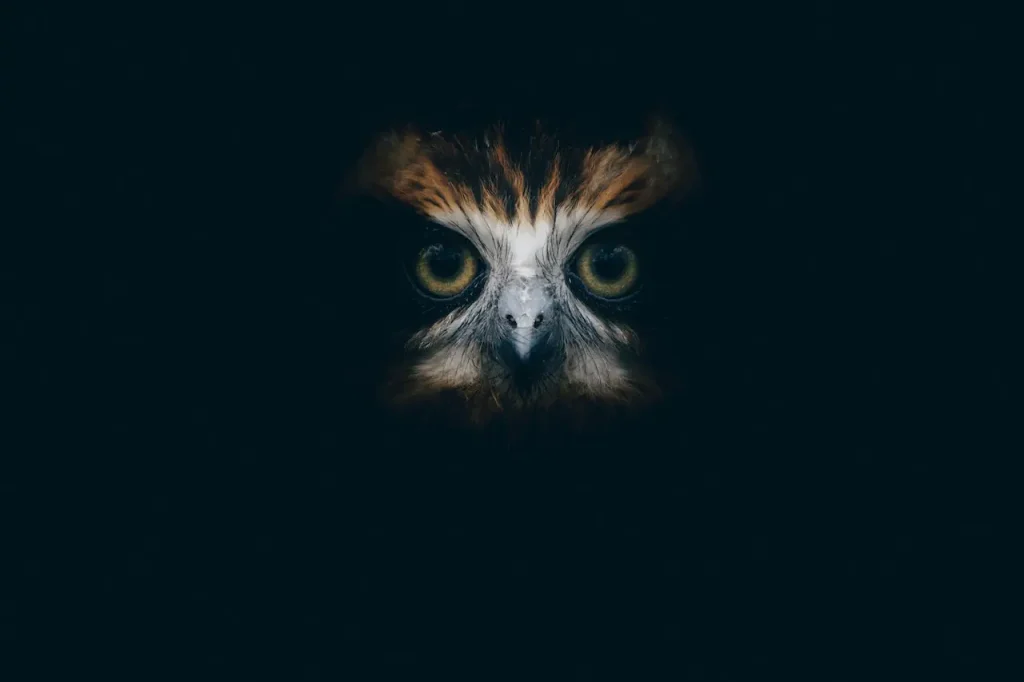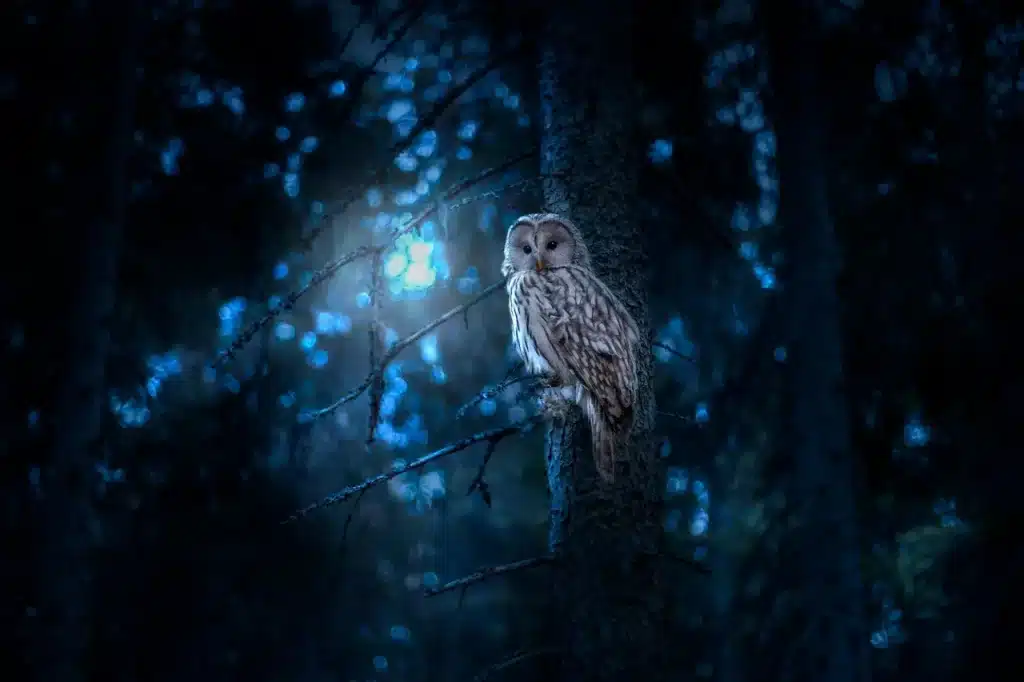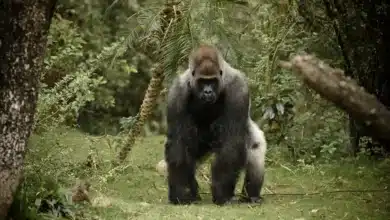The Great Grey Owl
The Ghost of the Northern Forest: Uncovering the World of the Great Grey Owl
A ghostly form glides between the shadows in the silence of the northern forest, where the snow mutes the crunch and whisper of the winter wind. It does not cry or make any noise. Just a sudden and deliberate movement with wide wings that slice through the air in complete silence. The Great Grey Owl is a master of stealth and a marvel in sensory evolution.
It appears more mythical than a bird at first glance. The Great Grey Owl has a large head, with a wide face, covered in silvery ruffles and yellow eyes that are as bright as the sun. It looks like a creature from an old northern myth. This is not a ghost. It is alive and well in the harshest of environments. It can survive in places where no predator would dare, and uses its exceptional hearing to detect even the slightest rustle from prey under the snow.
The story of the Great Grey Owl goes beyond biology. This is a tale of landscape, survival and the delicate relationship that exists between predator and prey.

Silent Sentinel of the Boreal World
From beak to tail, the Great Grey Owl can reach a length of 84 cm. Don’t be fooled by its size; this owl does not weigh much. The feathers that make up its impressive frame are fluffed for silent flight and insulation. It’s surprising how light it is for a raptor of its size.
This species is found throughout the northern hemisphere. Its habitat ranges from the taiga forest of Scandinavia and Siberia, to the wilds of Alaska and Canada and even into the northern United States, such as Minnesota, Montana and Oregon. Each population lives on the edge of wilderness where the boreal forest meets tundra, and life is dependent on the harsh winters.
The dense coniferous forest, often dominated by lodgepole pine, black spruce and tamarack, is a quiet place, especially during the winter. Snow muffles each step and every wingbeat. This is not a barrier for the Great Grey Owl. This is where the Great Grey Owl excels.
The Sound of Silence: Super-Hearing Beneath Snow
The Great Grey Owl is unique in that it has an almost supernatural ability to find prey beneath snow-covered grounds.
The owl’s facial ruff, which looks like a dish, isn’t just for display. This wide, flat surface works as a satellite dish to direct sound into the asymmetrical openings of its asymmetrical ears, hidden under feathers. The owl’s asymmetrical ear placement allows it to determine the exact direction and distance a sound is coming from in three-dimensional space. The owl can lock on to the position of voles or mice even in complete darkness and under 30 cm (12 inches) of snow.
The owl does not hesitate to attack its target once it has been identified. The owl hovers briefly before adjusting its flight path in mid-air and crashing feet-first, talons outstretched, into the snow. It is more than likely to emerge with a meal in its powerful grip.
A body designed for precision, intense focus and perfect timing is required to hunt this way. The Great Grey Owl has been designed for this moment, from its large wingspan (up to 1.5 metres or five feet) to the soft-edged feathers which allow silent flight.
Diet and the Vole Connection
The Great Grey Owl has a specialisation in prey. In many areas, it feeds on voles. These burrowing rodents are found in the subnivean (the layer between the ground surface and the underside snowpack), where they build elaborate tunnel networks that are hidden from predators.
The Great Grey Owl is not the only one to be afraid.
The survival of the owl is closely tied to the vole population cycle and the other rodents. The owls will leave their territory to find better hunting grounds when vole populations crash. This happens periodically. They may move hundreds of kilometres on a nomadic seasonal journey in times of scarcity.
Scientists call these irruptions. They explain why birdwatchers may find themselves in the face of this northern predator, a rare visitor from the boreal depths.
A Life of Seclusion and Stillness
Great Grey Owls can be difficult to see in the wild, despite their hunting abilities. Their grey feathers blend perfectly with the mottled fur of spruce trees and firs. The birds perch motionless, waiting for even the slightest sound to indicate prey. They conserve energy in the cold by remaining still for long periods of time.
They are more active during the day than many other owls, especially in the breeding season, when they have to hunt more often to feed their young. They raise their chicks far away from humans in abandoned raptors’ nests or broken treetops.
The Great Grey Owl’s parenting strategy is a delicate balance of risk and reward. Early spring is when eggs are laid, sometimes even with snow still on the ground. The male feeds the female while she remains in the nest. The chicks are very fast-growing once they hatch, but bad weather conditions or lack of food can cause a high mortality rate. In years of low food, parents may stop reproducing altogether.
These owls have been built to survive.
The Cultural Connection: Owls in Myth and Meaning
Owls are considered spiritual messengers in many Indigenous cultures of North America and Eurasia. In some cultures, owls are considered to be omens, signs of change or wisdom.
A mythical status is given to the Great Grey Owl due to its ghostly look and elusive behaviour. In Cree tradition, owls have been regarded as protectors of the night and watchers, with their cries indicating warnings or guiding messages. In Finnish folklore, owls have been revered for their wisdom and ability to see what others can’t.
It’s awe-inspiring to see a Great Grey Owl out in nature. It could be the way that it looks back at you with such calmness, as if it were judging you on another planet. It could be the sheer impossibility of it all–a giant bird living in the coldest forest, relying on sound to find food.

Changing Forests, Shifting Futures
The Great Grey Owl is under real threat, primarily due to habitat destruction and climate change.
Logging old-growth forests reduces nesting sites available and disturbs the delicate balance between prey and predator. While fire suppression policies prevent catastrophic burns, they also cause forests to become dense, which affects the open hunting areas that owls prefer.
Populations are vulnerable in parts of the southern range of this species, such as California’s Sierra Nevada and parts of British Columbia. Conservationists here work to protect suitable habitats, monitor nests and minimise human disturbances.
The changing climate is another factor. Uncertainty is heightened by warmer winters, unpredictable snowfall and disturbed prey cycles. Such changes are especially dangerous for a species that is so tuned into its environment.
Will the Great Grey Owl adapt to the changing boreal forests?
Where to See the Great Grey Owl
Patience is required, but not impossible. The best places to see this majestic bird include:
- Saskatchewan & Manitoba, Canada– The dense boreal forest and large vole population support stable owl numbers.
- Northern Minnesota– Sax-Zim Bog in winter is a birdwatcher’s paradise, as Great Grey Owls are often seen migrating south during irruption seasons.
- Finland– The owls are still thriving in Finland and Sweden, where there are vast expanses of unbroken Taiga and with careful conservation.
- Siberia, the Russian Far East– This is one of the least disturbed areas of owls’ range. They remain untouched in their ancient habitats.
You can step into the world of a polar bear by walking through its habitat, the silent, snow-covered woods in far northern Canada. Every rustle is important, and shadows may be watching.
Conclusion: The Listener in the Snow
The Great Grey Owl reminds us that survival does not always depend on strength but rather precision, patience and mastery of the environment.
This bird doesn’t draw attention to itself. It doesn’t scream or flash its feathers. It listens instead–to wind, snow, and the slight movements under the crust of winter. The owl is a silent witness in a world where the noise level increases every year.
On its face, we can see the wisdom and knowledge of the forest. In its wings, we see the quiet confidence that has lasted for thousands of years. In its presence, we can catch a glimpse of the wildness that we’re still fortunate enough to see.




